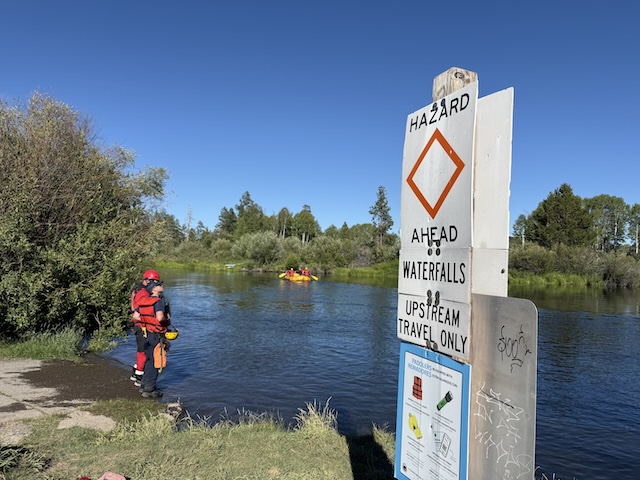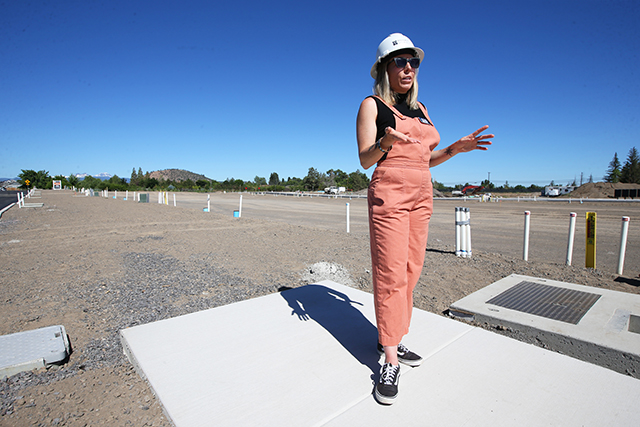Fiber optics come a long way
Published 5:00 am Sunday, April 1, 2012
When Central Oregonians reminisce about Internet access more than a decade ago, it’s only a matter of time before someone mentions the backhoe.
Until 2002, the region’s primary connection to the rest of the state was a fiber optic line that ran from Portland, around Mount Hood, and down through cities along U.S. Highway 97.
Trending
“That essentially means someone could shut down telecommunications for a whole area simply by sticking a backhoe through the line,” said former Crook County Judge Scott Cooper.
In one case, the backhoe cut the line in Boring. Another time, it happened in Clackamas. There were five major episodes of service loss from 2000 through January 2003, according to a telecommunications newsletter from that era.
Each time, Central Oregonians lost long-distance telephone service, Internet access, and credit card and automated teller machines. Service was down for hours.
“It was really terrible,” said Josh Richesin, director of operations and engineering for Quantum Communications. “It knocked out 911 and everything for at least a couple hours.”
The situation improved in 2002, when Qwest — now known as CenturyLink — built a loop of fiber optic lines through Central Oregon. When the loop was broken, data could be rerouted back in the opposite direction within milliseconds and still reach its destination.
Yet Prineville was left out of the “Cascade Fiber Optic Ring,” and some people worried they might be in for a repeat of a situation in the early 1900s, when the region’s main rail line bypassed Prineville.
Trending
That problem was solved in 2003 when CenturyLink completed a “mini ring” of fiber connecting Prineville to the larger Central Oregon ring. Nearly a decade later, Prineville is served by at least three rings of fiber line, enough connectivity to convince Facebook and Apple to open data centers.
The CenturyLink fiber rings resulted from a 1999 state law, Senate Bill 622, which ended regulation of profits for telecommunications companies that agreed to invest in infrastructure improvements. CenturyLink opted into the law’s provisions and spent $120 million to upgrade telecommunications infrastructure and help K-12 schools with equipment and, for a limited time, network services, Chris Tamarin, telecommunications strategist for Business Oregon, wrote in an email.
CenturyLink’s fiber ring to Prineville was important for economic development.
“One of the reasons why connection in the fiber optic loop was so important was because more and more data was being transferred by Les Schwab,” Cooper said of the tire store chain.
In 2001, the fiber line was cut near Portland, and Les Schwab couldn’t communicate with its stores for six hours. The company needed a better connection to remain competitive.
Since 2003, Prineville has steadily gained more fiber connections.
BendBroadband built a fiber line to Prineville in 2007, said Amy Tykeson, BendBroadband CEO.
Quantum Communications, which is an affiliate of Central Electric Cooperative, built a fiber ring connecting Prineville to Redmond and Madras in 2008. Service contracts with state agencies helped pay for the project, which did not happen sooner because of cost.
“There were actually quite a few state offices that were underserved,” Richesin said.
The company Level 3 built a fiber ring for Facebook, which opened its first Prineville data center last year, Richesin said. Facebook contributed to the cost of this loop, which was built by both CenturyLink and Level 3, Lee Weinstein, a spokesman for Facebook, wrote in an email. Weinstein did not say how much Facebook paid.
BendBroadband is completing a fiber ring that will connect Prineville with Bend and Madras, Tykeson said. The work is part of a $4.4 million federal stimulus project awarded to BendBroadband to build 130 miles of fiber optic connections from Madras to La Pine, from Bend to Prineville and several other points.
Richesin said that multiple lines, operated by different companies, benefit consumers.
“There’s more competition and more companies coming into the area,” Richesin said. “The pricepoint just keeps coming down.”
Cooper said the fiber optic connection made it possible for future businesses to move into the area, although he never expected data centers to crop up.
“If there was a list of 100 industries most likely to come to Prineville, it (data center industry) would have probably been 101,” Cooper said. “I didn’t see that coming.”








